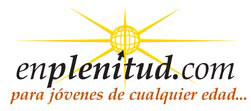12.1. Buses and trains - Autobuses y trenes
How much is a ticket to Barcelona? - ¿Cuánto cuesta un billete para Barcelona?
One/A ticket to Barcelona, please. - Un billete para Barcelona, por favor.
Where does this train/bus go? - ¿A dónde va este tren/autobús?
Where is the train/bus to Barcelona? - ¿Dónde está el tren/autobús hacia Barcelona?
Does this train/bus stop in Barcelona? - ¿Este tren/autobús tiene parada en Barcelona?
We could translate literally “para Barcelona” from the verb “parar” but it is better to say “tiene parada” in order to do not confuse the verbal form “para” with the preposition “para” (= to, for).
When does the train/bus for Barcelona leave? - ¿Cuándo marcha/parte/sale el tren/autobús para Barcelona?
When will this train/bus arrive to Barcelona? - ¿Cuándo llegará este tren/autobús a Barcelona?
How can I get to Barcelona? - ¿Cómo puedo llegar a Barcelona?
...the train station? - ...la estación de tren?
...the bus station? - ...la estación de autobuses?
...the airport? - ...al aeropuerto?
...downtown? - ...al centro?
...the Garibaldi Hotel? - ...el Hotel Garibaldi?
...the American/Canadian/Australian/British Consulate? -
...el Consulado de Estados Unidos/Canadiense/Australiano/Británico/?
We have already said that the adjective in Spanish goes after the noun. Here it is the same.
Where can I find a hotel? - ¿Dónde puedo encontrar un hotel?
...a restaurant? - ...un restaurante?
...a bar? - …un bar ?
...sites to see/visit? - ...sitios para ver/visitar?
Can you show it to me on the map? - ¿Puede/s enseñármelo/mostrármelo en el mapa? (Tú/Usted).
Street - Calle
Square - Plaza
Building - Edificio
Road – Carretera
Left - Izquierda
Right - Derecha
Turn left - Gira/e a la izquierda. (Tú/Usted)
Turn right - Gira/e a la derecha. (Tú/Usted)
Take the first street to the right - Toma/e la primera calle a la derecha.
Take the third street to the left - Toma/e la tercera calle a la izquierda.
Straight ahead, on - Todo recto, sigue/siga recto. (Tú/Usted)
In Spanish, when we pronounce the letter “g”, it can have two possible sounds:
- A strong sound, as the Spanish “j” (similar to a stronger English “h” or the German “ch”). In these cases: ge, gi.
- As a softer sound (as “guitar” in English). In these cases: ga, go, gu.
- If we find “gue, gui” we must pronounce the soft sound.
Examples: Sigue recto / Siga recto. These phrases have the same sound (soft).
Words with soft sound: gato (cat), gallo (cock), garganta (throat), guerra (war), guerrero (warrior), guitarra (guitar), guía (guide), gobierno (government), gota (drop), guante (glove), gubernamental (governmental).
Towards the …- Hacia el/la…
Past the…- Pasado el/la…
Before the… - Antes de…
Look for the … - Busca/busque el/la… (Tú/Usted)
Intersection - Intersección , cruce
Roundabout – Rotonda, glorieta
North - Norte
South - Sur
East - Este
West - Oeste
Uphill - Hacia arriba
Downhill - Hacia abajo
Upstairs- Escaleras arriba
Downstairs - Escaleras abajo
12.2. Taxi - Taxi
Taxi! - ¡Taxi!
Take me/us to Barcelona, please! – Lléveme/Llévame a Barcelona, por favor! (Usted/Tú))
How much does it cost to go to Barcelona? - ¿Cuánto cuesta ir a Barcelona?
Leave me here, please. - Déjeme aquí, por favor.
|



